
There are few topics that touch more people than healthcare. For the broader public, healthcare often is equated with costs. Fair enough: American healthcare spending as a percentage of Gross Domestic Product is larger than all other countries, save Germany and Russia.
In the U.S., spending on healthcare is measured in trillions (see graphic for 2017 figures). We have only preliminary estimates for U.S. healthcare spending for 2018, but the figure of $3.65 trillion is about equal to the economies of Canada and Spain combined. If that figure holds, it would represent a rise of about 4.4 percent over 2017, which is faster than the economy grew.
This explains why one of the questions we asked of our finalists and honorees for PRNEWS’ Top Women in Healthcare Communications awards involve communicating about costs. We also asked about building trust and breaking through the vast amount of information (and misinformation) online about healthcare. Their edited responses are below.
On July 16 the awards will be presented during a gala luncheon at The Yale Club in NYC.
[Editor’s Note: PRNEWS subscribers are entitled to a 33 percent discount on all PRNEWS events and webinars. Should you be interested in attending the Top Women in Healthcare Communications awards luncheon, please contact Carol Brault ([email protected]) for your discount. For more information about the luncheon, please go to: https://www.prnewsonline.com/go/top-women-in-healthcare-2019/]

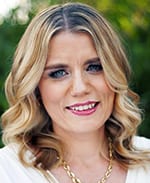 Dr. Sherry McAllister
Dr. Sherry McAllister
EVP
Foundation for Chiropractic Progress
PRNEWS: Patients have access to so much medical information, or misinformation, online and elsewhere. How can ethical communicators cut through the noise to become a trusted source of healthcare information for patients?
Sherry McAllister: Quality healthcare information starts with the use of research, guidelines and appropriate references.
Being a credible, trusted source for information means that diligence, accuracy and factual data must be distributed consistently along several channels of communication.
Working with healthcare leaders and other trusted sources brings greater credibility and enhances the consumers’ confidence in the information presented. Becoming a trusted, established leader in healthcare is earned on a daily basis.
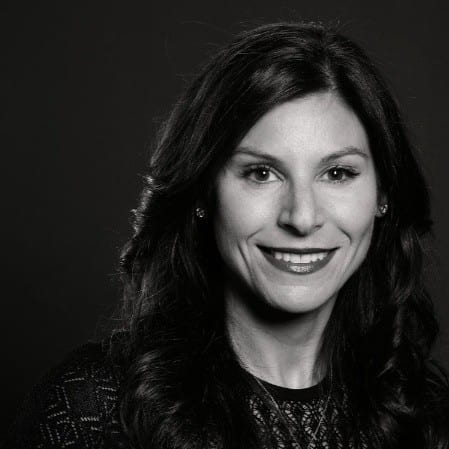 Elyse Margolis
Elyse Margolis
Practice Leader, Pharma
W2O Group
PRNEWS: Addressing the cost of healthcare and ensuring the industry’s benefits to society are clearly communicated may be the top challenges facing healthcare communicators. What are two ways to attack those challenges?
Elyse Margolis:The value conversation has transformed dramatically over the past few years out of a necessity to re-define the value of therapies—some curative—that have changed the trajectory of diseases. The pace of innovation has out-lapped our traditional definitions of “value” and we’re watching in real-time as industry, providers, payers and consumers put forth a new value lens. In terms of attacking these challenges:
Data:We have billions of data points and massive de-identified data sets that are ready to be powered to help us understand the value of medicines in new ways. We must leverage the data to understand and convey the full picture—days lost or gained, caregiver impact, steps walked, the psychosocial impact—to unlock value as it directly connects to real-life measures of value.
Show Don’t Tell: We must continue to offer a platform for those at the center of this discussion who can articulate the value of innovation better than any data set can: the patients, their caregiving circle, healthcare practitioners on the frontlines, those who are living the value of innovation. Only through this kind of storytelling can we continue to drive the value dialogue forward in a productive way.
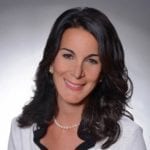 Jodi Amendola
Jodi Amendola
CEO
Amendola Communications
PRNEWS: Patients have access to so much medical information, or misinformation, online and elsewhere. How can ethical communicators cut through the noise to become a trusted source of healthcare information for patients?
Jodi Amendola: It’s definitely tough in this era of “the facts are whatever you want them to be.” But it starts with pointing to evidence such as evidence-based clinical studies and information from trusted government sources such as CMS. There also is an element of showing what happens if you ignore the science—the consequences to ourselves and our family and friends. If people are convinced you are looking out for their best interests (instead of just trying to sell them something), and you help them avoid health issues, they will come to view you as a trusted source.
 Gina D’Angelo-Mullen
Gina D’Angelo-Mullen
Director, Marketing & Communications
CareMount Health Solutions
PRNEWS: What communications tactics and channels are you most excited about regarding the future of healthcare communications?
Gina D’Angelo-Mullen: There are so many. My team is part of a management services organization, with the multispecialty group, CareMount Medical, as a client. This means the department serves B2B and B2C markets. As an industry veteran it’s amazing to think back about how we used to do things, and the shift to all things digital. CRM, marketing automation, AI, Voice Search, Call Center, and Patient Experience are all of interest. I look forward to using technologies that help us reach the ultimate goal, which is clear, relevant, and action-oriented messaging to our patients and clients.
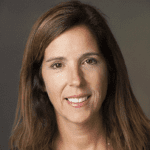 Martha Temple
Martha Temple
CEO
Optum Behaviorial Health
PRNEWS: How can communicators ensure that their digital messages continue to have the human touch?
Martha Temple:It’s really important to give people options to engage with information and services in a way that works for them. This means traditional in-person appointments, but also options to get services virtually, via video, chat, phone or a mobile connection.
Unfortunately, the need for behavioral health services is increasing, while the shortage of providers continues to be a challenge. Innovative technologies can play a role in bridging this divide by helping patients get the right care, at the right time and in the right setting. Keeping that human touch is important. We have to combine technology-enabled efforts with human understanding and expertise to engage with and guide people to appropriate treatment.
 Rebecca Madsen
Rebecca Madsen
Chief Consumer Officer
UnitedHealthcare
PRNEWS: Right or wrong, healthcare communications often is faulted for employing corporate-speak or medical mumbo jumbo. How can the industry overcome that issue?
Rebecca Madsen: It’s not a secret that the health system can be confusing to navigate, especially if people must decipher terms and acronyms to access care.
To help address that, the industry is working to simplify experiences, giving patients what they need to help them make more informed choices. At UHC, examples include digital onboarding, which makes plan enrollment more personalized and enables people to select relevant clinical, wellness or financial programs. After a medical service, members receive a personalized claim video that helps them better understand their benefits. For everyone, we offer an online glossary of health care terms at justplainclear.com
The goal is to help simplify the health care experience, with that goal underpinning all internal and external communications.
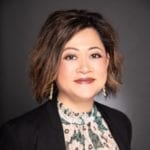 Dr. Eva Heintz
Dr. Eva Heintz
Solvay Specialty Polymers
Global Marketing Manager, Healthcare
PRNEWS: What communications tactics and channels are you most excited about regarding the future of healthcare communications?
Eva Heintz:I am super excited about the rise of virtual and augmented reality technologies as communication tools for healthcare. There’s something to be said about being able to visualize the anatomy and a treatment as if you’re inside the body. I believe leveraging tools like augmented reality for training health professionals and educating patients and the general public about medical procedures will be the future. Now, more than ever, we are so visually engaged that I believe it will become a necessity.
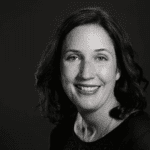 Mary Claire Duch
Mary Claire Duch
Practice Leader
W2O Pure
PRNEWS: How can communicators ensure that their digital messages continue to have the human touch?
Mary Claire Duch: Advances in digital and social platforms have created a wealth of opportunities for healthcare communicators, allowing us to reach stakeholders directly in a way never before possible. However, in order for these communications to be effective, we must keep the content as REAL as possible. Employ a thoughtful approach to social engagement with a tone appropriate for each individual channel. Showcase corporate leaders in their own words on LinkedIn. Tap into the experiences of patients in an unscripted fashion on Facebook. Seek opportunities for real-time community engagement (e.g. Facebook Live events). Create engagement guidelines that allow for rapid, fluid responses and interaction across channels.
 Lee Hedman
Lee Hedman
EVP
Surgical Directions
PRNEWS: Addressing the cost of healthcare and ensuring the industry’s benefits to society are clearly communicated may be the top challenges facing healthcare communicators. What are two ways to attack those challenges?
Lee Hedman:With social media, patients have information at their fingertips they never had before. It is important for billing and collection of charges for medical services be timely and accurate. Patients have options for their care and failure to provide top-notch billing can be circulated throughout a patient’s social network. The same is true when they have a positive experience.
Hospitals and providers should know the cost of services, so they can answer questions for patients who are trying to determine insurance benefits versus cost.
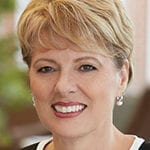 Leslie Simmons, RN, FACHE
Leslie Simmons, RN, FACHE
EVP, LifeBridge Health
President, Carroll Hospital
PRN: What communications tactics/channels are you most excited about regarding the future of healthcare communications?
Leslie Simmons: Face-to-face communication is best, but I also am a fan of quick videos and photo stories. Short snippets are an effective way to share timely information that is distilled down so that viewers can grasp the immediate message. Tailoring communication this way also makes it more accessible to a wider audience. Utilizing social media tools, such as Facebook Live, is another effective way to share information and generate awareness.
I also use videos to communicate with employees. Each month I record a two- to three-minute video for our hospital staff to keep them informed. While I prefer to get on the floors and talk to employees, this is the next best thing when I can’t connect with them personally.
 Erica Kless
Erica Kless
SVP, Healthcare
FleishmanHillard
PRNEWS: Patients have access to so much medical information, or misinformation, online and elsewhere. How can ethical communicators cut through the noise to become a trusted source of healthcare information for patients?
Erica Kless: First and foremost we need to communicate as people to people in the most compelling way possible. You can’t become a trusted source if no one sees your information. There’s a tendency to focus so much on making sure content is technically accurate that we risk losing people’s interest. You need to figure whom you’re trying to reach and really consider how that specific audience consumes information. For instance, you could spend a ton of resources building a beautiful, informative site, but if no one visits it then it won’t deliver results. Once you know where and how to share information, you can focus on the fundamentals, such as including trusted, external sources like advocates and clinicians.
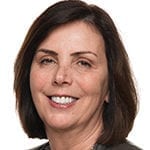 Donna Murphy
Donna Murphy
Global CEO
Havas Health & You
PRNEWS: What communications tactics and channels are you most excited about regarding the future of healthcare communications?
Donna Murphy: The things exciting me most are the advancements in tech and data. Our company used to be fundamentally communications, and now our agencies work alongside our innovation division and HVH, a predictive analytics company that is changing profoundly our understanding of health around the world. As communicators, our agency teams now have access to information that has completely transformed their knowledge set, along with the ability to develop tech solutions that are integral to our clients and partners’ business. These synergies will allow us to share the best possible end-to-end solutions, and ultimately and most importantly, impact patients’ lives.
 Chrissi Gillispie
Chrissi Gillispie
Outreach Coordinator
Foothills Gateway, Inc.
PRNEWS: Healthcare communications often is faulted for employing corporate-speak or medical mumbo jumbo. How can the industry overcome that issue?
Chrissi Gillispie: This is simple. As communications pros, we need to take a step back. Acronyms and “mumbo jumbo” have meaning. It is our job to translate for the public. If you need, bring in others to see if they understand your interpretation. Education and awareness are the best tools we have. Write for readability and keep your articles/newsletters/stories as explicit as possible.
